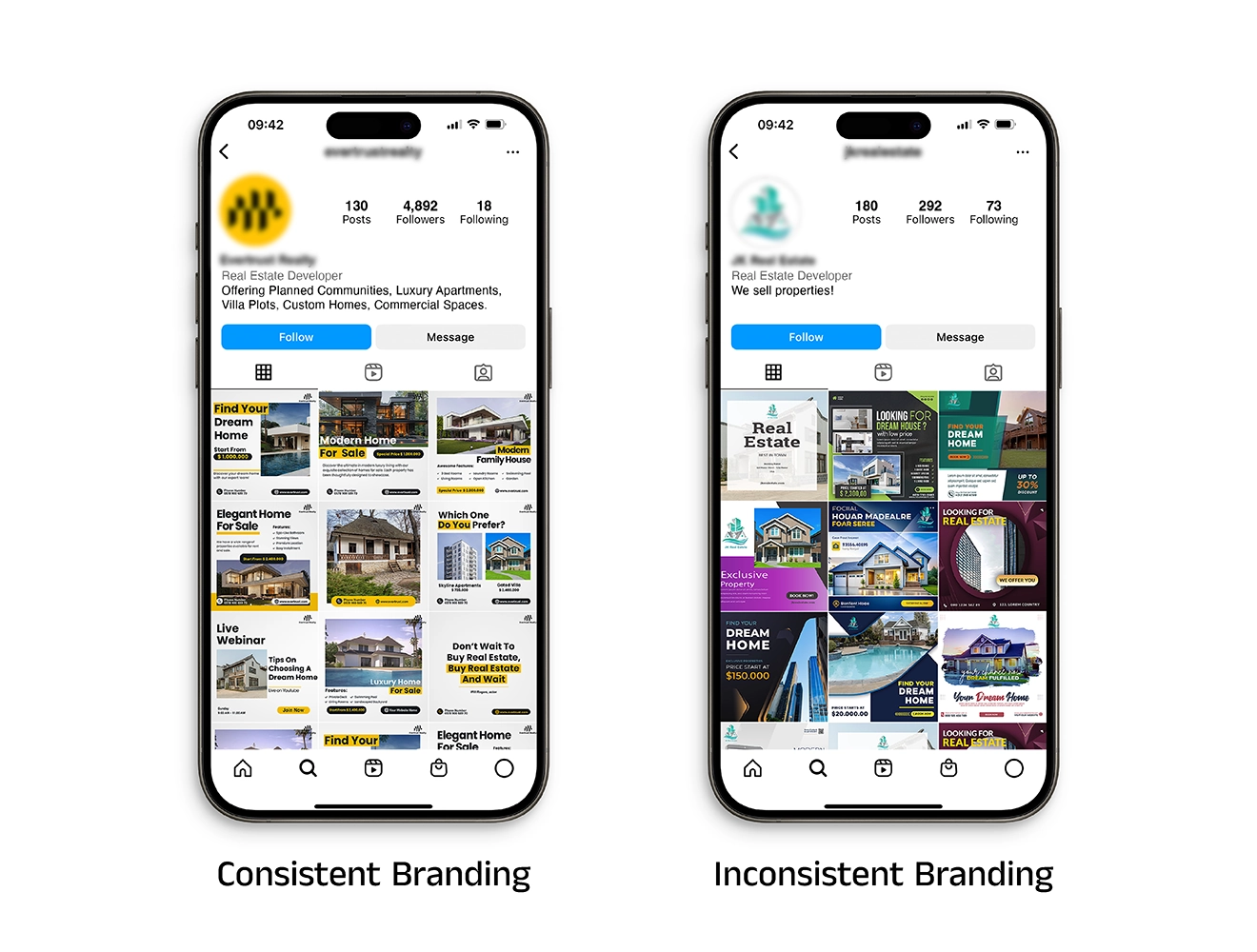Real Estate Performance Marketing 101: Optimising Your Sales Funnel for Higher Lead Conversions
Building an effective real estate sales funnel is a step-by-step process. Each stage sets the foundation for the next, requiring strategic planning, market insight, and a thoughtful approach. Performance marketing is about more than just data; it is about combining knowledge, intuition, and the right strategies to create a seamless customer journey.
This blog will walk you through refining your real estate funnel, moving from clicks to site visits, and ultimately, to closed sales, while ensuring your brand presence remains strong throughout.
Choose the Right Marketing Platforms to Reach Your Audience
Selecting the right platform is crucial for real estate marketing success. Google Ads and Meta (Facebook and Instagram) are top choices, engaging a significant portion of buyers. Industry data shows that Cost Per Lead (CPL) on these platforms often ranges between ₹500 and ₹5000, depending on the campaign's targeting and content quality.
The following information should be made into a table.
| Category Cost per Lead (Benchmarks) | |
| Affordable | : ₹500 to ₹1300 |
| Budget | : ₹1000 to ₹2500 |
| Luxury | : ₹2000 to ₹5000 |
| Uber Luxury | : ₹4000 + |
While focusing on these proven platforms is effective, it may be valuable to explore options like YouTube for high-value properties or LinkedIn for B2B projects. A well-balanced approach combines data analysis with market insight to choose platforms that align with your audience and campaign goals.
Maximize Your Marketing Budget for Maximum Impact
Effective budget planning is essential for performance marketing. A commonly recommended guideline is to allocate around 1% of your project’s value to marketing, adjusted according to project scale, competition, and market conditions. For instance, a project valued at ₹100 crore might benefit from a marketing budget of around ₹1 crore to generate quality leads.
Unlike broker commissions that can be 1-2% of the sale, performance marketing offers flexibility and control. Leads generated through well-executed campaigns can be nurtured over time, enhancing brand visibility and future marketing efforts.
Create Compelling Creatives That Drive Engagement
Creatives play a key role in engaging potential buyers. Generic visuals and uninspired messaging rarely resonate with audiences. Your content should capture the audience’s aspirations and address their concerns. High-quality creatives help reduce CPL and boost Return on Ad Spend (ROAS). Implementing A/B testing can identify what appeals most to your target audience, ensuring consistent engagement and stronger campaign performance.
Integrating your brand’s visual identity and tone in all creative content supports long-term brand-building, even when focusing on performance marketing.

Personalized Targeting: Reach the Right People, At the Right Time
With your budget and creatives ready, the next step is refining your targeting strategy. Effective targeting helps manage CPL and improves the lead-to-site visit ratio.
- Geography matters:Most buyers prefer properties within a 15 km radius of their current location when purchasing for personal use. However, this radius expands to 50 to 100 km if the property is being bought as an investment. Therefore, focusing on specific geographic areas ensures that leads remain relevant.
- Demographic focus is key: Demographic data such as age, income, occupation, and lifestyle is crucial for targeting the right audience. For mid to high-value real estate projects, focusing on individuals aged 25-45 with strong income levels aligns with industry benchmarks of 10-15% site visit-to-conversion rates, ensuring your marketing efforts yield relevant leads.
Combining targeting with an understanding of local market preferences helps tailor your campaigns for optimal results.
Harness the Power of Data with CRM Integration
Capturing accurate data is essential for maximising marketing returns. Integrating leads into a Customer Relationship Management (CRM) system ensures timely and personalised follow-ups. This helps maintain conversion rates that meet or exceed industry standards. Combining CRM insights with intuitive follow-up strategies creates a more natural and engaging lead nurturing process.
Tele calling: The Key to Converting Leads into Site Visits
Leads only add value when they result in site visits. A strong tele calling team can make all the difference, ensuring the lead-to-site visit ratio stays at or above the industry standard of 5%. Effective telecallers know how to listen, build rapport, and schedule visits that prospects look forward to. This stage plays a crucial role in keeping site visit-to-conversion rates healthy.
The Site Visit: Your Chance to Seal the Deal
The site visit is when all your efforts come together. Sales teams should be equipped with insights from telecallers to provide a personalised experience. A well-executed site visit can push conversion rates to industry standards of 10-15%. The focus should be on showing buyers why the property fits their needs. Follow-up communication after the visit is essential to maintain interest and guide buyers toward a decision.
Retargeting: Keep the Conversation Going for Long-Term Growth
A sale does not mean the end of your marketing efforts. Retargeting campaigns aimed at past buyers with referral incentives and loyalty programs can generate fresh leads at a lower CPL and increase ROAS. This strategy turns your funnel into a continuous cycle that supports long-term growth.
Conclusion: Build a Real Estate Funnel That Delivers Consistent Results
To optimise your real estate funnel as mentioned, a methodical, step-by-step approach is crucial. By monitoring metrics like CPL, lead-to-site visit ratios, and site visit-to-conversion rates, you can evolve your funnel into a powerful revenue-driving system. With the right strategy, your funnel not only converts clicks into loyal customers but also amplifies your brand’s value and supports long-term growth.
